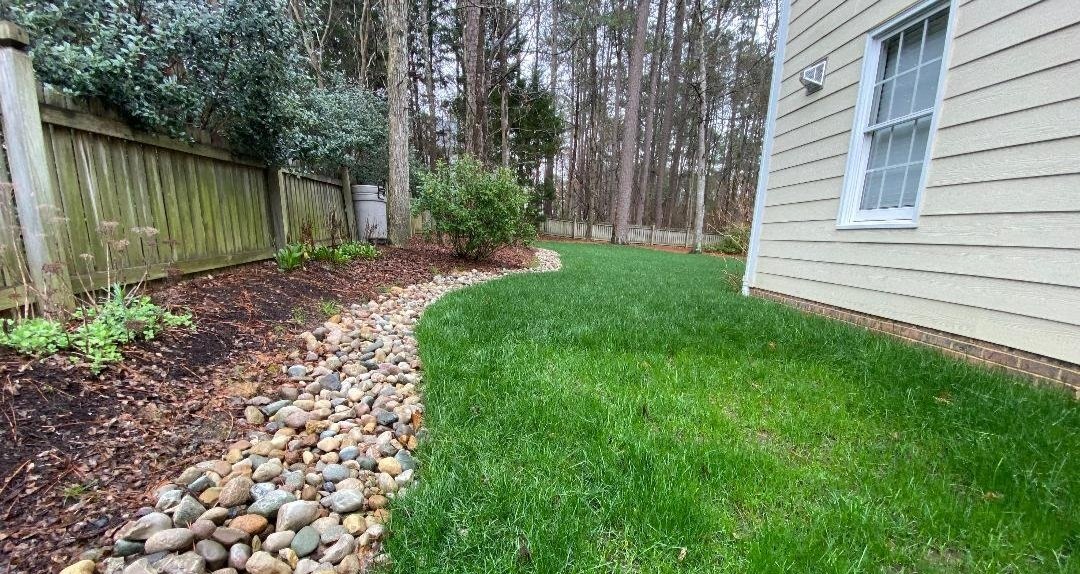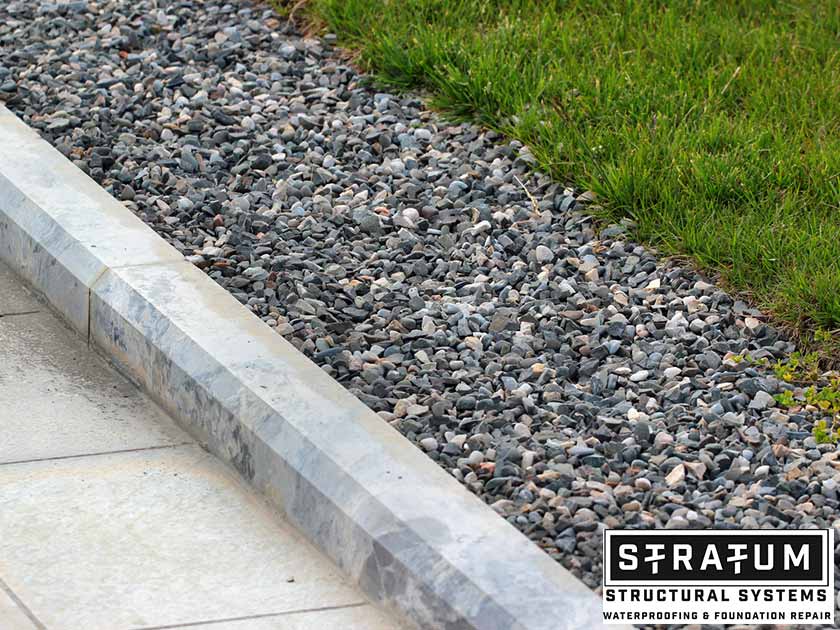Portland French Drain Success Stories from Portland-Area Homeowners
Wiki Article
The Important Guide to Maintaining Your French Drain for Long-Lasting Efficiency
Keeping your French drainpipe is vital to its performance and your residential or commercial property's protection. Regular checks can conserve you from pricey fixings and water damages. You'll wish to know what indicators to seek and just how commonly to check your system. Plus, understanding the cleansing procedure can make a substantial difference. Let's discover the necessary steps for ensuring your drainpipe functions well for many years to find.Recognizing the Function of a French Drainpipe
A French drainpipe is a crucial part in handling water around your home. It guides excess water far from your structure, avoiding flooding and damages. When hefty rain drops, the drain accumulates water with a perforated pipe hidden in gravel. This system permits water to flow openly, minimizing pressure on your cellar walls and decreasing the danger of leaks.You could question how it functions in method. As water fills the soil, gravity draws it toward the drainpipe. The perforated pipe records this water, carrying it to a designated water drainage area or tornado drain. This process keeps your backyard dry and shields your home's structural integrity.Understanding just how a French drain functions is key to appreciating its value. By efficiently channeling water away, it assists keep a dry and risk-free living atmosphere. Maintaining your French drainpipe in top condition assurances you stay clear of costly repair work down the line.Regular Inspections: What to Try to find
Beginning by checking for any clogs that may be obstructing water circulation when you're checking your French drain. Focus on indications of surface area disintegration around the drain, as this can suggest possible issues. Routine evaluations will assist maintain your drain system operating properly.Obstructed Drainpipe Analysis
Just how can you inform if your French drainpipe is obstructed? Watch for water merging in your lawn, particularly after heavy rain. That's a red flag if you notice locations where water accumulates rather of draining pipes. You need to additionally inspect the drain outlet; if water isn't streaming out as it should, there's likely an obstruction. Listen for unusual gurgling noises, which can suggest trapped air. Furthermore, inspect the drain's surface area for any kind of plants development, as origins can infiltrate and clog the system. If you smell musty smells, it might point to stationary water triggered by a clog. Consistently examining these indications can help you keep your French drain successfully and stop costly repairs.Surface Disintegration Inspect

Cleaning Your French Drain: Step-by-Step Overview
Cleaning your French drain is essential for keeping it operating correctly. You'll require some specific tools and a clear procedure to guarantee whatever runs efficiently. Let's walk via the actions and suggestions for keeping your drain successfully.Devices You'll Need
To deal with the job of cleansing your French drainpipe effectively, you'll intend to gather a few necessary devices. Get a strong set of handwear covers to secure your hands from particles and sharp items. A little shovel or trowel will certainly assist you eliminate dust or obstructions around the drain. For removing out the interior, a plumber's snake or a high-pressure water nozzle can be incredibly useful. You'll also require a pail for accumulating any kind of particles you take out. Lastly, having a garden hose on hand will certainly make it less complicated to wash out the drainpipe and ensure it's flowing smoothly. With these devices prepared, you'll be set for an extensive cleaning session!Cleansing Refine Steps
Start by reviewing the area around your French drain for any kind of visible debris or blockages. Get rid of fallen leaves, branches, or dirt that might obstruct water circulation. Next off, check the inlet and electrical outlet locations; clear any blockages to ensure appropriate drainage. Make use of a garden tube to purge the drain, guiding water into the inlet. This aids remove any gathered sludge or sediment. If you see consistent blockages, take into consideration utilizing a plumbing's serpent to damage them up. After cleaning, evaluate the crushed rock around the drainpipe; renew it if it's gotten rid of. Lastly, confirm the drainpipe covers are intact and safely in position to protect against debris from going into. Routine cleaning maintains your French drain functioning properly.Upkeep Regularity Tips
While routine maintenance is important for your French drainpipe's longevity, recognizing just how frequently to preserve it can make all the distinction. Ideally, you ought to inspect your French drainpipe at the very least two times a year, ideally in spring and fall. After hefty rains or snowmelt, about his check for blockages or visit the site particles. If you discover any kind of standing water, it's time to cleanse your drain.In locations with heavy vegetation, more frequent maintenance-- regarding every three months-- might be essential. Furthermore, think about cleansing your French drainpipe after major storms or if you observe water merging in your yard. By remaining proactive, you'll assure your French drainpipe functions effectively and protects your building from water damages. Routine checks will certainly save you time and cash in the future.Identifying Typical Issues and Their Solutions
When you notice water pooling in your yard or damp spots in your cellar, it's crucial to identify common concerns with your French drainpipe and implement efficient solutions. One constant trouble is obstructing, commonly brought on by debris like leaves or debris. To fix this, you can use a pipes snake or a high-pressure water jet to clear blockages.Another concern might be inappropriate slope. Water will not stream away from your home if your drain isn't sloped appropriately. You can readjust the slope by excavating and repositioning the drainpipe pipe.Lastly, check for damage or cracks in the drainpipe itself. Replacing the damaged sections is important for peak performance if you find any. By attending to these issues without delay, you'll help ensure that your French drainpipe remains to work properly, safeguarding your residential property from water damages and preserving a dry, safe atmosphere.Seasonal Maintenance Tips for Your French Drain
Resolving usual issues with your French drain is simply the very first step in ensuring its long-lasting effectiveness. Seasonal upkeep is crucial for peak efficiency. In the springtime, remove leaves and particles that might have collected throughout winter. Examine for any type of blockages in the electrical outlet or capture container, as water requires a clear course to flow freely.During summertime, inspect your drain for any indications of working out or moving dirt. Make sure it's still level and operating appropriately. As loss approaches, clean any kind of dropped entrusts to avoid clogs prior to winter months arrives.In wintertime, watch for freezing temperature levels. If you reside in a cool climate, make certain your drain isn't at risk of cold. Shielding exposed pipes can help. Regular checks and prompt maintenance can stop pricey fixings and keep your French drainpipe functioning successfully year-round. Remain proactive and enjoy assurance knowing your water drainage system remains in great shape!When to Contact a Professional
When to call in a professional can save you time and prevent further damage to your French drain, recognizing. If you observe consistent standing water in your backyard, it's a clear sign that your drain might be blocked or harmed. Don't ignore strange odors, as they can show sewer backup or decay, which needs instant attention.If you locate that your drain isn't operating correctly after efforts to tidy or preserve it, it's time to get to out for expert assistance. Furthermore, if you're unclear concerning the underlying problems or do not have the needed tools, working with an expert can give tranquility of mind.Finally, if your French drainpipe is old or has actually experienced considerable deterioration, professional assessment can figure out whether repair work or full replacement is needed. Trust fund the specialists to ensure your drain system works successfully for years to come.Tips for Preventing Future Drainage Issues
To maintain your French drainpipe operating successfully, consistently inspecting and preserving it can make all the distinction. Begin by getting rid of particles, leaves, and dust from the surface area and drainpipe openings. This protects against blockages that can bring about water backup. Inspect the crushed rock around the drainpipe; if it's compacted or eroded, consider including fresh crushed rock to maintain perfect flow.Next, divert water away from your drain by making sure rain gutters and downspouts are clear and directing water at the very wikipedia reference least three feet far from your structure. Routinely check for any kind of indicators of damage or sagging. If you discover concerns, resolve them immediately.Finally, think about mounting a catch or a filter basin to trap larger particles prior to it enters the drain. By remaining proactive with these suggestions, you'll decrease the danger of future drainage problems and maintain your French drain in leading shape.Often Asked Questions
How Long Does a French Drainpipe Normally Last?
A French drainpipe usually lasts around 30 to 40 years, depending on the materials utilized and upkeep (Portland French Drain). If you keep up with regular checks, you can prolong its life expectancy even betterCan I Mount a French Drainpipe Myself?
Yes, you can install a French drain yourself if you have actually obtained the right tools and knowledge. Simply ensure to plan very carefully, follow local regulations, and assurance proper drain to prevent future concerns.What Products Are Made Use Of in a French Drain?
You'll require perforated pipe, crushed rock, landscape fabric, and a strong drain pipeline for your French drainpipe. These products help reroute water successfully, stopping flooding and maintaining your building risk-free and dry from water damage.
Is a License Required to Install a French Drainpipe?
You'll likely require a license to mount a French drain, depending upon neighborhood laws. Contact your district to assure you abide by any type of required standards and avoid potential concerns throughout setup.What Are the Costs Linked With French Drain Maintenance?
Maintaining a French drainpipe typically sets you back in between $100 and $500 annually. You'll need to think about expenses for cleansing, repair work, and assessments. Routine upkeep helps protect against bigger warranties and costs your system operates correctly for many years - Portland French Drain. When you're examining your French drainpipe, begin by examining for any type of blockages that may be obstructing water flow. By remaining positive, you'll ensure your French drain functions efficiently and shields your residential property from water damages. When you see water merging in your lawn or damp areas in your basement, it's vital to identify usual problems with your French drain and carry out effective services. You can change the incline by digging and repositioning the drainpipe pipe.Lastly, check for damage or splits in the drain itself. Examine the crushed rock around the drainpipe; if it's compacted or eroded, consider including fresh crushed rock to keep perfect flow.Next, draw away water away from your drain by making certain seamless gutters and downspouts are clear and guiding water at the very least three feet away from your foundationReport this wiki page